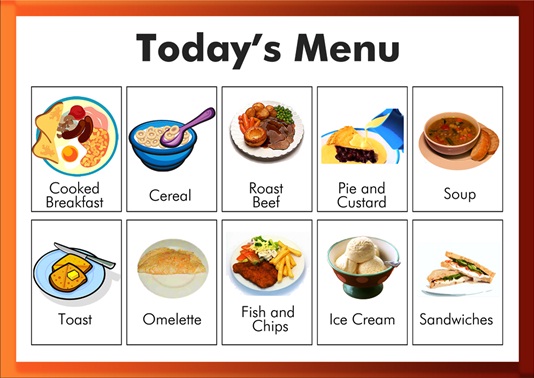Through dementia-friendly print, maintaining a good quality of life with independence and dignity is possible!
As our population ages, diseases like dementia are becoming more prevalent. One in three people will die with it, and you’d be hard-pressed to find someone who hasn’t had it touch their life in some way. The print industry can play an important role in aiding both people who have this degenerative disease and those who provide them with care.
Why Dementia Friendly Print?
Printed signs are an important part of dementia care, both for people who live independently and those who reside in assisted living homes. They can help with navigation and familiarity, providing powerful reminders of where essential objects and facilities can be found without leaving people to wander aimlessly or constantly rely on guidance from others – which they may not be able to seek out if they’re disoriented.
Dementia-friendly print may include reminders to take medication, calendars, or signs that direct the path different rooms. Not only do these simplify the navigation process, but they’re important for increasing recall and aiding in communication.

How To Make It Effective
Print professionals who consult with specialists have come up with set ways to make dementia-friendly print more effective. In particular, all signage should be easily recognisable, and follow seven principles regarding colours, shapes, pictures, materials, text contrast and durability.
Colours
A powerful communication tool, colour triggers emotions and memories. Many dementia sufferers may have impaired vision, so the correct use of colour will make a significant impact on their ability to read signs. Using bright, bold, contrasting colours (such as dark text on a light background) will better enable people with dementia to read directions, for example, to the bathroom or kitchen.
Shapes
Different shapes of signs may help those with dementia and impaired sight. The ability to differentiate which is which based on the overall shape of the sign is a subtle but effective way to help people with dementia-friendly print.
Pictures
Besides the shapes of signs themselves, pictures used on them are possibly even more effective in achieving dementia-friendly print. For those who struggle with reading, have lost the ability to do so, or are challenged by communicating with words, images are an excellent substitution. They trigger memories and help people identify landmarks. Simple photos or clipart of toilets, kitchenware and television sets will help people make independent decisions about where they want to go or what they want to do.

Text
The presentation of typography is essential to sign production. Dementia specialists frequently state that block capital letters should only be used at the start of each word, as all block caps can be hard to read. The shape of the font selected should also be considered; clear typefaces and sans serif fonts are best for dementia-friendly print. Finally, large-sized type with high contrast to the colour of the sign itself is ideal.
Materials
While factors like pictures may be more obvious, the materials used to print them may not be considered initially. In fact, the way signs are made is just as important as what’s printed on them. Signs should be non-reflective, so light doesn’t cause glare and render them unreadable; accordingly, our bond posters are an affordable option. Depending on the facility where they’re used, signs may also need to be fire safety-rated and meet infection control regulations.
Durability
The materials used will of course be the deciding factor in determining how durable a dementia-friendly print sign will be. This sign may get touched to determine its shape, and may get dusty or dirty over time; accordingly, it needs to be put up securely and be able to withstand cleaning products. People with dementia will rely on these signs for gaining access to life’s essentials, such as the bathroom, kitchen or bed. They have to stay in great shape and not contribute to any confusion. In many instances, products like our Correx signs are a great choice for this purpose.

For Therapy, For Life
Research has indicated that clear signage like these from Dementia Signs, as well as other forms of print, can be important aspects of therapy for dementia patients. Because signs and images can trigger memories and improve recall, they’re excellent for efforts to improve the onset of dementia or prevent it from worsening. Dementia-friendly print signs can reduce stress and confusion as well as increase safety for those afflicted with this disease, enabling them to be happy, safe and independent.
Furthermore, dementia-friendly print can extend beyond the home environs; those who design and order signs for businesses and community buildings may also wish to consider those with dementia who are out and about. These same seven principles are still applicable for them and will extend that sense of ease, safety and independence for those who still travel independently (especially if they are in earlier stages or haven’t yet been diagnosed) or become separated from a family member or carer.
Memory Books
Dementia-friendly print can extend to more than just signs aiding people to get around their home; memory books are another useful and therapeutic item proven to assist those with the disease. Typically compiled by a friend or family member, they’re filled with familiar drawings, photographs and statements that will aid in recall and memory retention. A memory book may contain statements such as “I enjoy doing…. (knitting, bowling, reading, woodworking)” or “my children are…” and contain accompanying details and images. Memory books make a wonderful gift for a loved one with dementia, and can be easily printed in a format like our perfect bound brochure.

Now that more people are aware of dementia and how much it’s experienced, being considerate and accommodating of people with it will hopefully become commonplace. Just as we rightly make adjustments to better enable those with different physical abilities to be safe and independent, so should we think of people with dementia and their needs.




It’s an remarkable paragraph in support of all the internet people; they will obtain advantage from it I am sure.